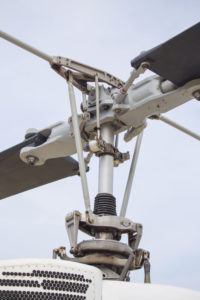The Vought-Sikorsky VS-300, invented by Igor Sikorsky, was the first single-engine helicopter to power both the main and the tail rotor systems. In the VS-300, the engine transmitted power to the main lifting rotor and the two auxiliary rotors using Vee-belts. The belts were either attached to the main shaft or coupled to the main gear drive depending on which rotor was being powered; while the rear rotors were driven through bevel gears.
On May 13, 1940, it made its first free flight, untethered, and continued testing its endurance until achieving the world record of 1 hour, 32 minutes, and 26 seconds. According to the Igor Sikorsky Historical Archives, “The development of the VS-300 established the concepts and principles there were utilized in the design of the VS-316 (R-4), the world’s first production helicopter. Thus began the world’s helicopter industry.”
On October 7, 1943, the VS-300 was given to Henry Ford and retired to his Edison Museum in Dearborn, Michigan.
Today, tail and lifting rotors experience rapid wear due to airborne grit which becomes entrapped in the seal glands. This can cause the tube assembly to become out of tolerance. SIFCO has experience rebuilding these outside diameters to size by selectively plating a nickel alloy, which provides the hardness and wear resistance required.
Learn more about our Aerospace applications and Nickel deposits, call us at 800-765-4131 or email us at info@sifcoasc.com.

 Chinese (Simplified)
Chinese (Simplified)  English (UK)
English (UK)  French
French  Spanish
Spanish  Swedish
Swedish 
